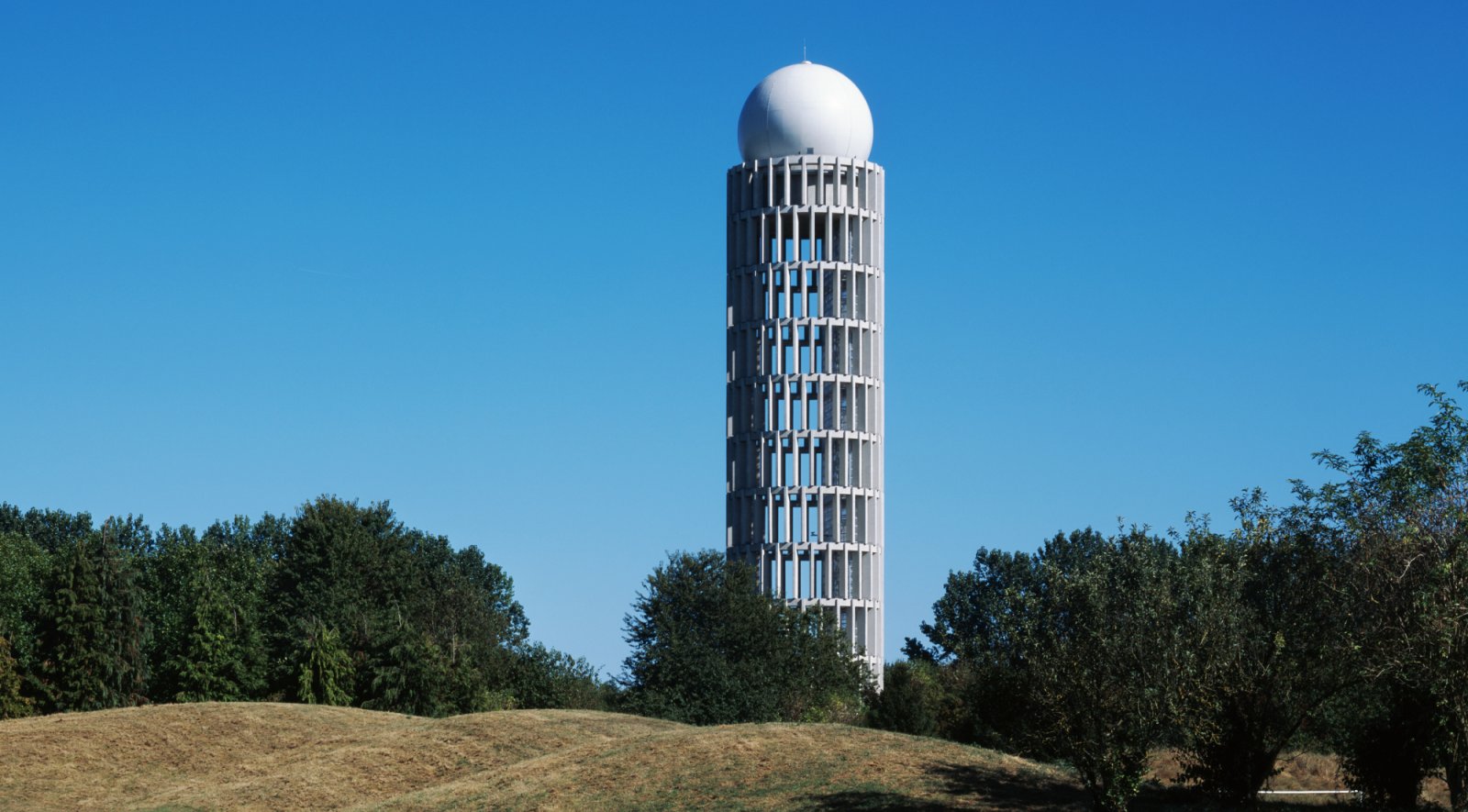Sited on the campus of the Ecole Polytechnique, the radar tower is one of the first project for the large-scale science cluster on Saclay plateau. Over 60m high, the tower provides a reliable air traffic control on the approach to Paris Orly Airport.
Rising above trees, the tower is a landmark indicating and orientating this new area of development. It is a 13.9 m diameter cylindrical trunk, housing all the required technical equipment. The only protrusion is the radome at the top.
This simplicity of form is reinforced by the choice of only one material, light grey, high quality prefabricated concrete. The tower will be seen against the sky: in order that light may shine through it, the structural wall is perforated. Each level is made of 28 concrete posts, arranged regularly.
These posts are trapezoidal, with important variations in width on their back face. High of 4.84m, they are set into annular beams at their head and base, forming 12 superimposed sections.
Each section is offset by a half-grid rotation, breaking vertical continuity. The porosity of the trunk, the alternately arranged posts, their multiple faces, go to form a sort of kaleidoscope beneath the changing light.
The internal volume is open to the air, interrupted only by the lightweight steel structure of the stairwell and lift shaft. Behind its formal simplicity, this construction boasts a complex structural functionality, particularly in the face of wind.
The porosity of the trunk meant that wind tunnel testing was necessary. The tower’s stability is obtained using the principles of a Vierendeel truss system with posts embedded into beams.
This assembly repeated 666 times constitutes a real technical challenge because of the multiple difficulties that it imposes: securing the parts together at altitude, precision adjustment, substantial and complex loading, the density and geometric variation of the sections. This key point was solved with the use of specific concrete connections (Peikko system). Source by Barthélémy Griño Architectes.
- Location: Saclay, France
- Architects: Barthélémy Griño Architectes
- Structural engineering: T/E/S/S
- Mechanical engineering: MTC
- Lighting consultant: 8’18’’
- General contractor: Rabot Dutilleul Construction
- Prefabricated concrete contractor: Techni Prefa
- Client: Direction des Services de la Navigation Aérienne
- Year: 2016
- Photographs: Hélène Binet, Courtesy of Barthélémy Griño Architectes
